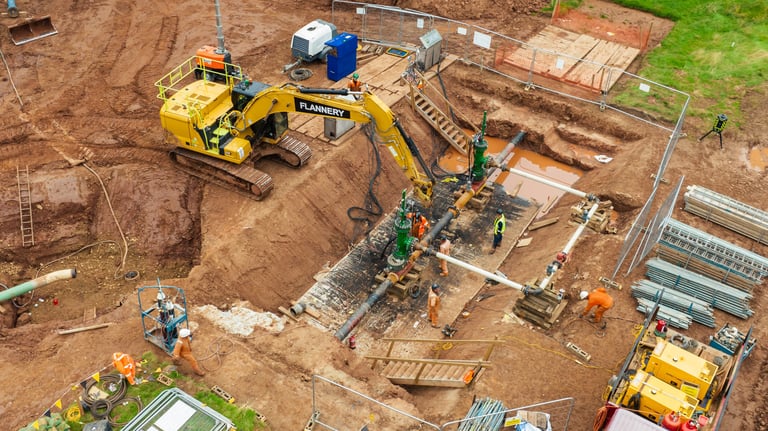
STATS pushes the boundaries of isolation technology to deliver concrete benefits.
It’s hard to overstate the importance of the pipeline network. The system is vital for transporting oil, gas and fuel efficiently and safely. It supports energy security, reduces transport emissions and ensures a reliable power supply to homes, businesses and industries.
So, its maintenance plays a vital role in ensuring the reliability, safety, and operational efficiency of oil and gas infrastructure both on and offshore.

Temporary pipeline isolation is a crucial part of that process, saving time and lowering costs by avoiding full system shutdowns, while also reducing harmful venting and flaring.
For more than 27 years, STATS has been pushing the boundaries of pipeline isolation and a look at its groundbreaking technology shows why it has earned a reputation for excellence.
Exceptional line stopping technology
STATS’ patented BISEP® (Branch Installed Self-Energised Plug) technology represents a significant advancement in line stopping.
Developed over two decades ago to address specific client challenges on the Brent platforms, the BISEP provides a double block and bleed isolation through a single full-bore hot tap. Its hydraulically actuated dual elastomer seals surpass the limitations of conventional lip seal technologies, delivering a proven, leak-tight, and fail-safe isolation, which is verified through a multi-stage testing process once deployed into the pipeline.
Another major development is STATS’ Remote Tecno Plug®. The inline plug is a piggable, remote-controlled, tetherless isolation tool. It features dual elastomer seals and taper locks providing leak-tight double block and monitored isolation. This allows systems to remain pressurised, live and operational during repair activities.
The dual seal plugs feature a zero-energy zone to enable maintenance work on pressurised systems to be carried out safely and efficiently. The remote-control system provides a high degree of flexibility, suitable for onshore, topsides and subsea applications.
Both STATS’ BISEP and Tecno Plug are fully certified by DNV to verify that the design criteria satisfies the requirements for Pipeline Isolation Plugs to provide dual seal and isolation in accordance with Offshore Standards.

Concrete benefits on display
There are a number of tangible benefits to STATS’ isolation technology. The ability to perform operations without shutting down the pipeline maintains product flow and minimises downtime and environmental risks. In addition, reduced venting and flaring leads to environmental benefits by cutting the amount of CO₂ released into the atmosphere.
Success in the field
In Aberdeenshire, Scotland, a Remote Tecno Plug was deployed in the National Transmission System to enable a 48" diameter pipeline to remain fully pressurised at 55 bar for 56 km during replacement of an insulation joint.
Compared to conventional pipeline recompression methods, the Tecno Plug prevented the discharge of approximately 332 tonnes of gas, equivalent to over 7,500 tonnes of CO₂. That’s comparable to taking around 4,500 cars off UK roads for a year. On top of that, the installation and testing of the Tecno Plug were completed in just 24 hours.
So, it’s perhaps no surprise it won the won the Institution of Gas Engineers and Managers (IGEM) Project of the Year award.
.jpg?width=1440&height=1080&name=30in%20RTP%20St%20Fergus%2c%20SAGE%2c%20Apache%20(13).jpg)
Helping drive the energy transition
Accelerating investment in CCS and hydrogen has put a focus on how existing pipeline infrastructure can be repurposed. That means isolation technology will be increasingly important to the safe and efficient repair of the network.
STATS double block and bleed isolation technology has already proven to provide high integrity isolation in both 100% hydrogen and high-pressure liquid CO2 pipelines. So, it’s perfectly placed to support pipeline operators’ transition to more sustainable energy.
As the case studies above prove, STATS’ technology also helps cut its customers’ carbon emissions. It avoids the need to depressurise large sections of the pipeline which would result in significant quantities of greenhouse gases being pumped into the atmosphere. In the case of large diameter gas pipelines, that could potentially be tens of thousands of tons of methane emissions.
It's all part of a service which sees STATS continue to support its customers in cutting emissions as the world seeks to transition to more sustainable sources of energy.
Written by Energy Voice